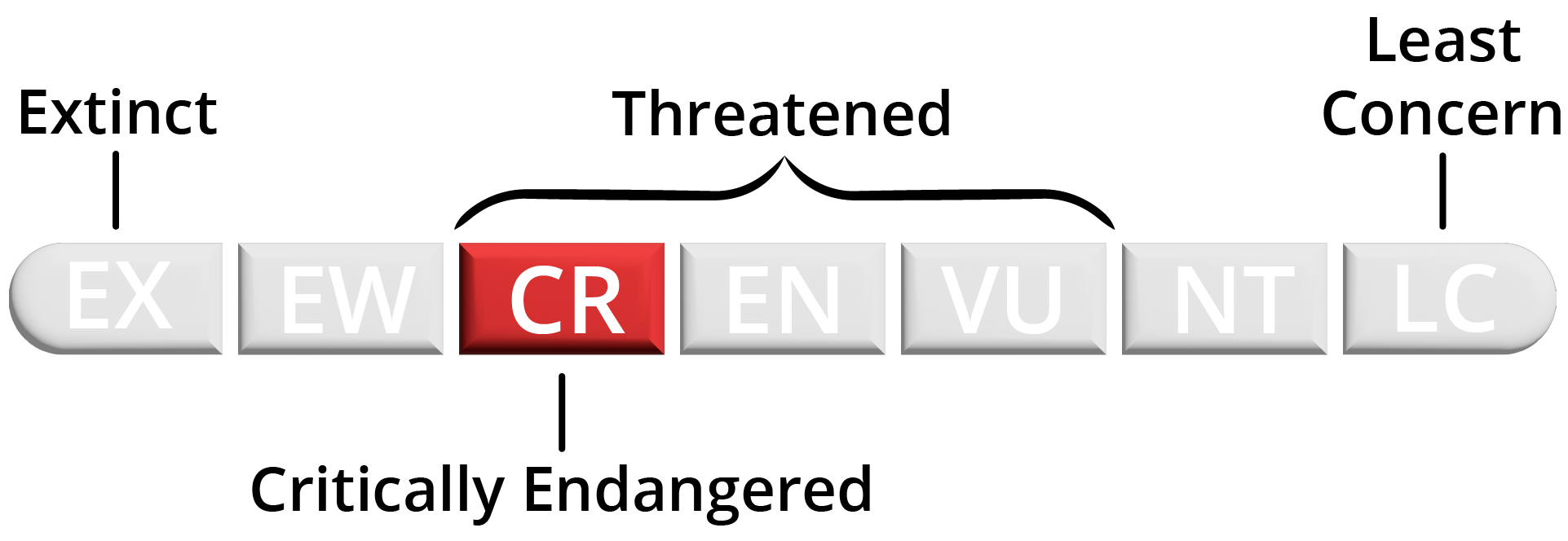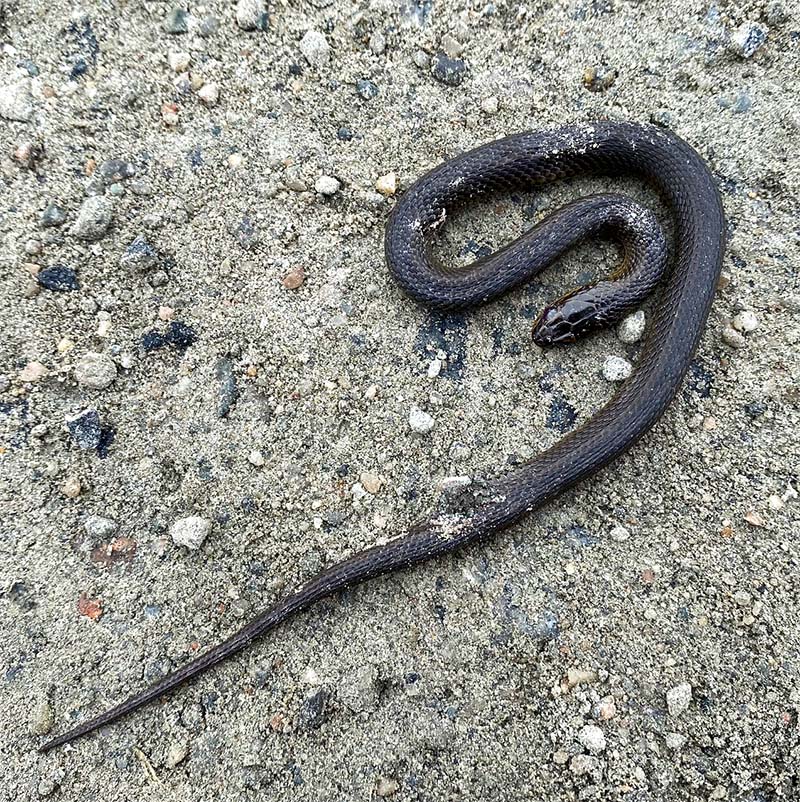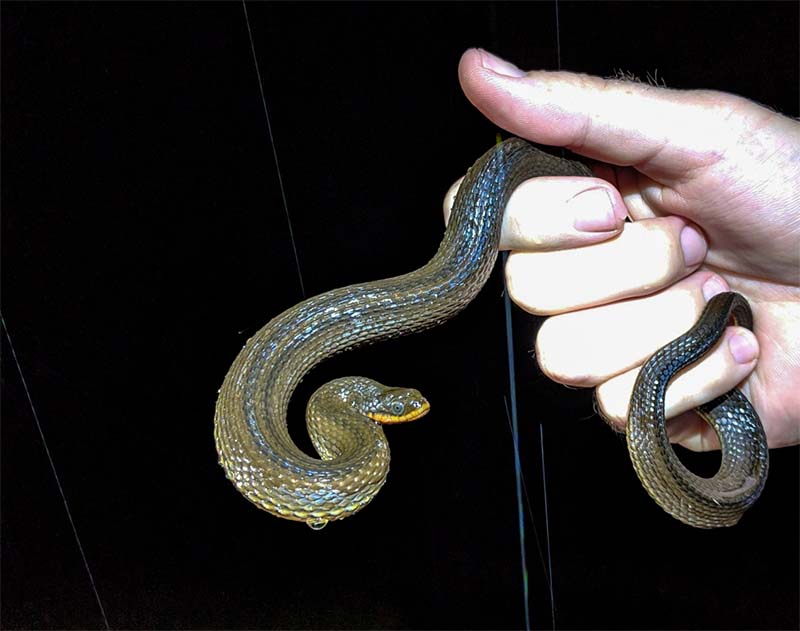
The Eastern Glossy Swampsnake is listed as Critically Endangered in the state of Virginia
- Scientific Name
- Liodytes rigida rigida
- Range
- New Kent County
- Also Known As
- Crayfish Snake, Striped Moccasin
- Venomous
- No
- Features
- Extremely Rare in Virginia. Only Found in One County
- Prey
- Crayfish
- Litter Size
- 6 - 14 per Birth
- Life Span
- 10 - 20 Years
- Length
- 14 - 24 Inches
Quick Links for Eastern Glossy Swampsnake
Eastern Glossy Swampsnake Description
Eastern Glossy Swampsnake Appearance
This snake has a shiny dark color, with a few dark stripes on the back, but the stripes are hard to see from to a casual observer. The belly is a light yellow color, with 2 sets of dark half-moon shaped patterns.
The scales on this snake is rough, and rather stiff. and has dark lines on the side of the throat.
Size
This snake on average is between 14 and 24 inches long. With Virginia’s record length being 30.5 inches and the record length being 34.4 inches long.

This snake is almost pure black with very muted patterns, unlike the Cottonmouth which pattern’s can be seen.
Behavior
Typically these snakes do not bit if threatened or approached. If they see any present danger they will immediately go into the water and dive to the bottom. If captured, it will release a foul smelling musk as a defense mechanism.
Eastern Glossy Swampsnake Range and Habitat
Range
These are only found in the swamps of New Kent county. It is possible they can be found outside of New Kent, but it is unlikely. This snake’s range extends down to the coast of northern Florida.
Habitat
These snakes are highly aquatic, and prefers slow moving or still waterways such as swamps, marches, lakes, ponds, ditches, and rivers. They are rarely encountered outside of the water, and frequently are seen under logs or debris in water. They can be found in crayfish burrows as well.
Diet
The main food for these snakes are crayfish, leading to them getting their name Crayfish Snake. They can have other prey such as small fishes, salamanders, frogs, and other arthropods.
Reproduction and Young
Reproduction
Mating season starts in early May to late June. And then they give birth in the late summer or early fall. These snakes do not lay eggs, but rather has live births.
Eggs and Young
They give birth between 6 to 14 young per birth. The young will have the same coloration as the adults but will be a pinkish color. The juveniles tend to be 6 to 7 inches long when born.

